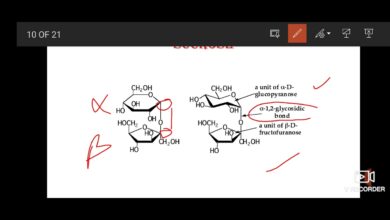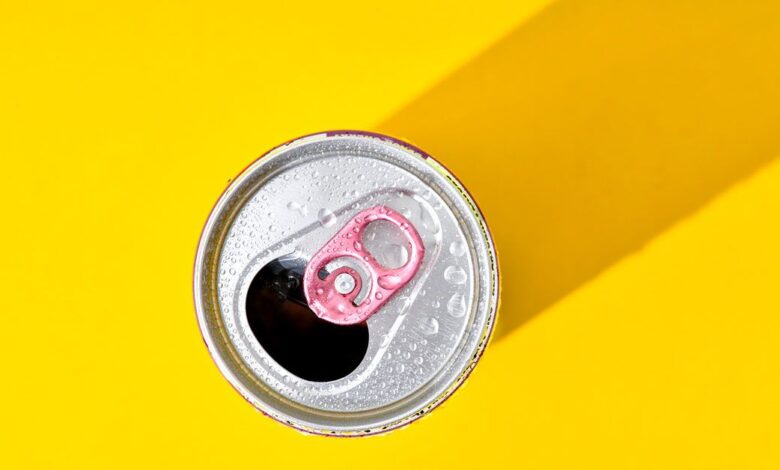
Is Light Beer the Diet Soda Equivalent?
Is light beer the diet soda equivalent? It’s a question that has sparked debate among beer enthusiasts and health-conscious individuals alike. While light beer boasts fewer calories than its regular counterpart, it often comes with a trade-off in flavor and satisfaction.
This raises the question: is light beer merely a “diet” version of beer, or is there more to the story?
This article dives into the brewing process of light beer, exploring its unique ingredients and the impact on its nutritional content. We’ll examine the motivations behind choosing light beer, compare it to diet soda, and discuss the perception of light beer as a “healthier” alternative.
We’ll also explore the taste and sensory experience of light beer, taking into account the role of marketing and branding. Ultimately, we’ll weigh the potential health benefits and drawbacks of light beer consumption, considering its place in our cultural and social landscape.
Understanding Light Beer
Light beer is a popular choice for those seeking a lighter, less filling option compared to regular beer. Its brewing process, ingredients, and nutritional content differ significantly, contributing to its unique characteristics.
The Brewing Process of Light Beer
The brewing process of light beer involves several key modifications to reduce its calorie content and alcohol concentration.
- Adjuncts:Light beers often use adjuncts, such as rice or corn, in addition to barley malt. These adjuncts are less fermentable than barley, resulting in a lower alcohol content and fewer calories.
- Brewing Temperature:Light beers are brewed at lower temperatures, which limits the amount of fermentable sugars extracted from the grains. This contributes to a lighter body and a lower alcohol content.
- Yeast Strain:Specific yeast strains are used to create a faster fermentation process, resulting in a beer with less residual sugar and fewer calories.
- Filtration:Light beers are often filtered more extensively to remove any remaining yeast and other particles, leading to a clearer and lighter appearance.
Ingredients in Light Beer
The ingredients used in light beer are similar to regular beer, but with some key differences:
- Water:Water is the primary ingredient in beer, and its quality significantly impacts the final product. Light beers often use water with a lower mineral content, which contributes to a cleaner and less bitter taste.
- Barley Malt:Barley malt is the primary source of fermentable sugars in beer. Light beers may use a lower proportion of barley malt and a higher proportion of adjuncts.
- Hops:Hops provide bitterness, aroma, and flavor to beer. Light beers often use lower hop varieties or lower hop concentrations, resulting in a less bitter taste.
- Yeast:Yeast is responsible for converting sugars into alcohol and carbon dioxide during fermentation. Light beers utilize specific yeast strains that contribute to a faster fermentation process and a lower alcohol content.
Nutritional Content of Light Beer
Light beer typically has fewer calories and less alcohol than regular beer. This is mainly due to the use of adjuncts, the brewing process, and the specific yeast strains used.
- Calories:Light beers typically have around 100-110 calories per 12-ounce serving, compared to 150-170 calories for regular beers.
- Alcohol Content:Light beers typically have an alcohol content of around 4% ABV, compared to 5% ABV for regular beers.
- Carbohydrates:Light beers have fewer carbohydrates than regular beers, primarily due to the lower amount of fermentable sugars.
The “Diet Soda” Analogy
The comparison between light beer and diet soda is a popular one, and for good reason. Both products offer a lower-calorie alternative to their full-sugar counterparts, appealing to consumers seeking to reduce their calorie intake or maintain a certain weight.
We all know the feeling: reaching for a “lighter” option, hoping it’s a shortcut to a healthier choice. Is light beer the diet soda equivalent? Maybe, maybe not. Ultimately, it’s about understanding your goals and making informed decisions.
If you’re looking to manage your weight, focusing on high-fiber meals is a fantastic strategy. Check out this comprehensive guide on High Fiber Meals for Weight Loss: A Guide to Feeling Full and Slim for tips on staying satisfied and reaching your goals.
And when it comes to light beer, remember moderation is key – just like with any food or beverage.
However, the motivations behind consuming these beverages can vary, and the perception of these options as “healthier” choices is complex.
We all know that light beer is marketed as a “lighter” option, but is it truly the diet soda equivalent for beer drinkers? While it might have fewer calories, it can still trigger hormonal responses that can sabotage your weight loss efforts.
To truly understand the impact of light beer on your body, it’s crucial to consider the role of hormones like leptin, ghrelin, and insulin, which are essential for regulating appetite and metabolism. Check out this great article on 3 Hormones to Keep in Mind for Weight Loss to learn more.
Understanding how these hormones work can help you make informed choices about your food and drink, even if it’s just a light beer.
Motivations for Consuming Light Beer and Diet Soda
The reasons why individuals choose light beer or diet soda can be diverse. Here are some common motivations:
- Calorie Reduction:Both light beer and diet soda are marketed as lower-calorie alternatives to their full-sugar versions. This is a significant motivator for individuals seeking to manage their weight or reduce their overall calorie intake.
- Health Concerns:Some consumers may choose light beer or diet soda due to concerns about the health risks associated with consuming high amounts of sugar. These concerns might include increased risk of obesity, type 2 diabetes, and cardiovascular disease.
- Taste Preference:While some consumers prefer the taste of light beer or diet soda, others may find them to be a suitable alternative to their regular choices, especially when they are trying to reduce their sugar intake.
- Social Factors:The choice of light beer or diet soda can also be influenced by social norms and peer pressure. In some social settings, these beverages might be perceived as more “health-conscious” or “acceptable” choices.
Perception of Light Beer as a “Healthier” Option
Light beer is often marketed as a “healthier” option compared to regular beer, but this perception is not entirely accurate. While light beer has fewer calories and carbohydrates than regular beer, it is not necessarily a healthier choice overall.
- Nutritional Value:Both light beer and regular beer are generally low in nutritional value. They do not provide significant amounts of vitamins, minerals, or fiber.
- Alcohol Content:Light beer typically contains the same amount of alcohol as regular beer, despite having fewer calories. Excessive alcohol consumption can have negative health consequences regardless of the type of beer consumed.
- Marketing Strategies:The perception of light beer as a “healthier” option is often influenced by marketing strategies that emphasize its lower calorie content and association with a “healthier” lifestyle. However, it is important to consider the overall health impact of alcohol consumption.
Marketing Strategies for Promoting Light Beer as a “Diet” Alternative
The marketing of light beer often employs strategies designed to position it as a “diet” alternative to regular beer. Some common tactics include:
- Emphasis on Calorie Reduction:Marketing campaigns often highlight the lower calorie content of light beer compared to regular beer, emphasizing its suitability for consumers seeking to manage their weight.
- Association with Health and Wellness:Light beer is often associated with health and wellness through the use of imagery and messaging that portray it as a “healthier” choice. This can include showcasing active lifestyles, fitness activities, and healthy eating habits.
- Targeting Specific Demographics:Light beer marketing often targets specific demographics, such as health-conscious individuals, fitness enthusiasts, and those seeking to reduce their calorie intake.
- Use of “Diet” Terminology:Some light beer brands may use terms like “diet” or “light” in their product names or marketing materials to further reinforce the perception of a “diet” alternative.
Taste and Perception
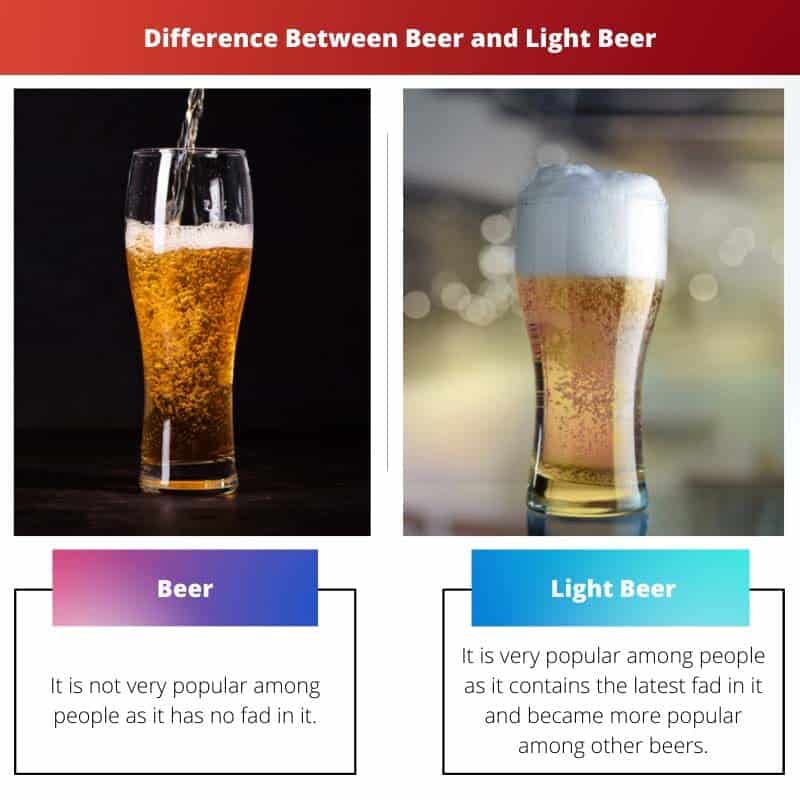
The reduced calorie content in light beer significantly impacts its flavor profile, often resulting in a less robust and complex taste compared to regular beer. This is due to the process of removing calories, which typically involves reducing the amount of fermentable sugars or using different brewing techniques.
Marketing and Branding Influence
Marketing and branding play a crucial role in shaping consumer perception of light beer’s taste. By emphasizing lightness, refreshment, and low calories, brands create an image of a beer that is easier to drink and less filling. This marketing strategy targets consumers seeking a lighter option without sacrificing the social experience associated with beer.
“Light beer is often marketed as a ‘healthier’ alternative to regular beer, even though it may not be significantly healthier overall.”
This marketing approach can influence consumer expectations and lead them to perceive light beer as less flavorful or complex.
Sensory Experience
The sensory experience of drinking light beer versus regular beer differs significantly.
- Aroma:Light beers often have a less pronounced aroma, with fewer hop notes and a more subtle malt profile. This is because the brewing process aims to reduce the intensity of these flavor compounds.
- Taste:Light beers tend to have a lighter body and a less intense flavor profile, with less bitterness and a smoother finish. The reduced calorie content often leads to a less complex and less satisfying taste experience.
- Mouthfeel:Light beers typically have a thinner mouthfeel compared to regular beers. This is due to the lower alcohol content and the reduced presence of fermentable sugars, which contribute to a fuller mouthfeel.
Health Considerations
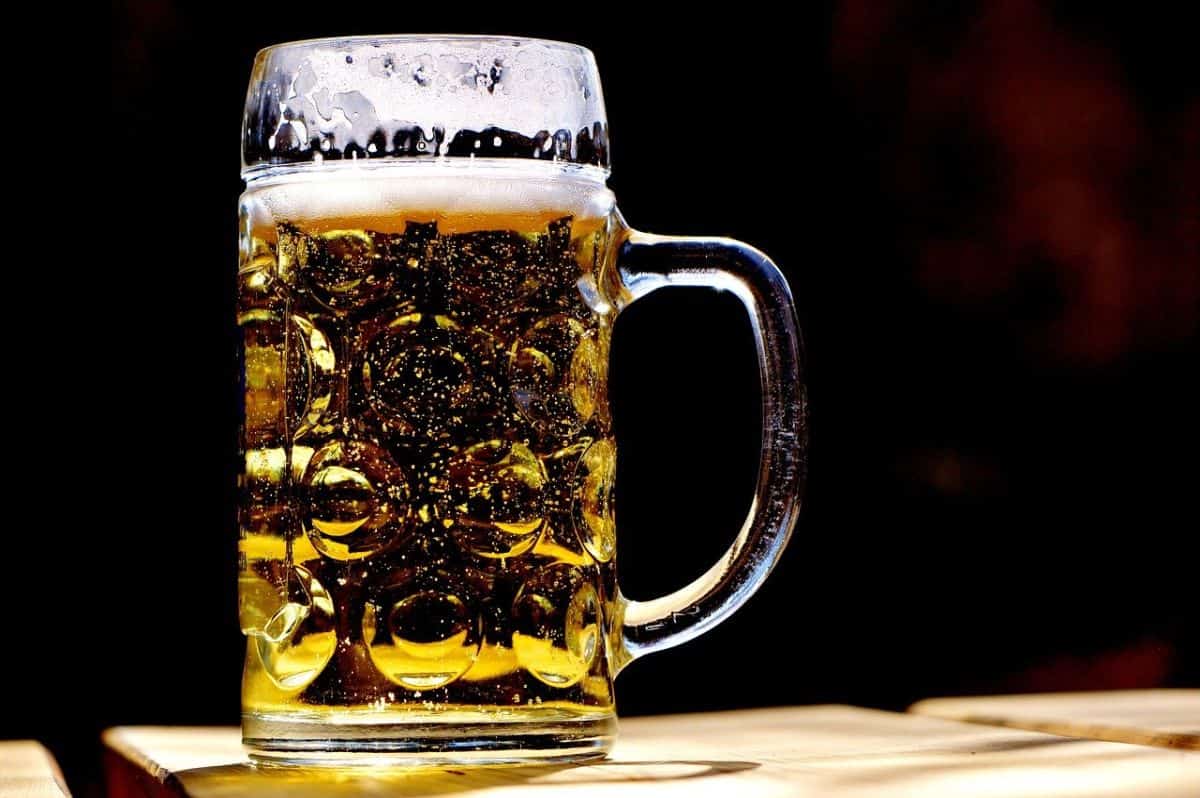
The “diet soda” analogy for light beer raises questions about its potential health impacts. While light beer contains fewer calories than regular beer, it’s essential to consider both the potential benefits and drawbacks associated with its consumption. This section will delve into the health implications of light beer compared to regular beer, exploring its potential role in weight management and addressing any potential risks.
Health Benefits and Drawbacks of Light Beer Consumption
Light beer, due to its lower calorie content, may offer some potential benefits, particularly in the context of weight management. However, it’s crucial to acknowledge that light beer is still an alcoholic beverage, and its consumption should be approached with moderation.
We all know the struggle: trying to enjoy a beer without the guilt of extra calories. Is light beer really the diet soda equivalent, or is it just a marketing ploy? While reducing calories is a good start, true weight loss requires a holistic approach.
Check out this article on 10 Simple Changes That Lead to Weight Loss for a more comprehensive plan. And remember, even if light beer is a “better” choice, moderation is key. So, grab a glass, but don’t forget to balance it with healthy habits!
- Reduced Calorie Intake:Light beer contains fewer calories than regular beer, which can be beneficial for individuals trying to manage their weight or calorie intake.
- Lower Carbohydrate Content:Light beers often have a lower carbohydrate content compared to regular beers, which can be advantageous for individuals managing blood sugar levels or following a low-carb diet.
However, light beer consumption also presents potential drawbacks:
- Potential for Increased Alcohol Consumption:The lower calorie content of light beer might lead some individuals to consume more of it, potentially increasing their overall alcohol intake. This could lead to adverse health effects associated with excessive alcohol consumption.
- Limited Nutritional Value:Like regular beer, light beer lacks significant nutritional value, providing minimal vitamins, minerals, or fiber. It’s crucial to ensure a balanced diet that includes nutrient-rich foods.
Comparison of Light Beer and Regular Beer on Overall Health
While light beer may offer a lower calorie option, it’s essential to understand its potential impact on overall health compared to regular beer.
- Alcohol Content:Both light and regular beers typically contain similar alcohol content, which can contribute to various health risks if consumed excessively.
- Calorie Content:The primary difference between light and regular beer lies in their calorie content. Light beer generally has fewer calories due to its lower carbohydrate content, making it a potentially better choice for individuals trying to manage their weight.
- Impact on Liver Health:Excessive alcohol consumption, regardless of whether it’s light or regular beer, can negatively impact liver health. Chronic alcohol abuse can lead to conditions like fatty liver disease, alcoholic hepatitis, and cirrhosis.
- Impact on Cardiovascular Health:Moderate alcohol consumption, including light beer, may offer some cardiovascular benefits. However, excessive alcohol consumption can increase the risk of heart disease, stroke, and other cardiovascular problems.
Light Beer as a Weight Management Tool, Is light beer the diet soda equivalent
Light beer’s lower calorie content has led some to consider it a potential weight management tool. However, its effectiveness is debatable and depends on various factors, including individual lifestyle and dietary habits.
- Calorie Reduction:Choosing light beer over regular beer can reduce calorie intake, which can contribute to weight loss or weight management goals.
- Potential for Increased Consumption:The lower calorie content of light beer may lead some individuals to consume more of it, potentially negating any calorie reduction benefits.
- Importance of Balanced Diet and Exercise:Light beer should not be solely relied upon for weight management. A balanced diet, regular exercise, and overall healthy lifestyle are essential for achieving sustainable weight loss or maintenance.
Cultural and Social Context
Light beer, despite its often-maligned reputation, holds a significant place in American culture and society. Its popularity is rooted in a complex interplay of factors, including historical trends, marketing strategies, and evolving perceptions of health and wellness.
The Rise of Light Beer
The emergence of light beer in the 1970s coincided with a growing interest in health and fitness. Consumers, particularly those concerned about their weight and calorie intake, were drawn to the lower-calorie option. This shift in consumer preferences was strategically exploited by major breweries, who heavily marketed light beer as a healthier alternative to traditional beers.
Social Perceptions and Acceptance
The perception of light beer has evolved over time. Initially, it was seen as a healthier choice for those who wanted to enjoy beer without the added calories. However, this perception has shifted, with light beer often being associated with a lack of flavor and quality.
This shift in perception is partly due to the rise of craft breweries and the increasing demand for more flavorful and complex beers.
Light Beer in Social Settings
Light beer continues to hold a prominent position in various social settings. It is often the go-to choice at large gatherings, sporting events, and casual outings. This is partly due to its affordability and accessibility, as well as its perceived “lightness” and ease of consumption.
The Future of Light Beer
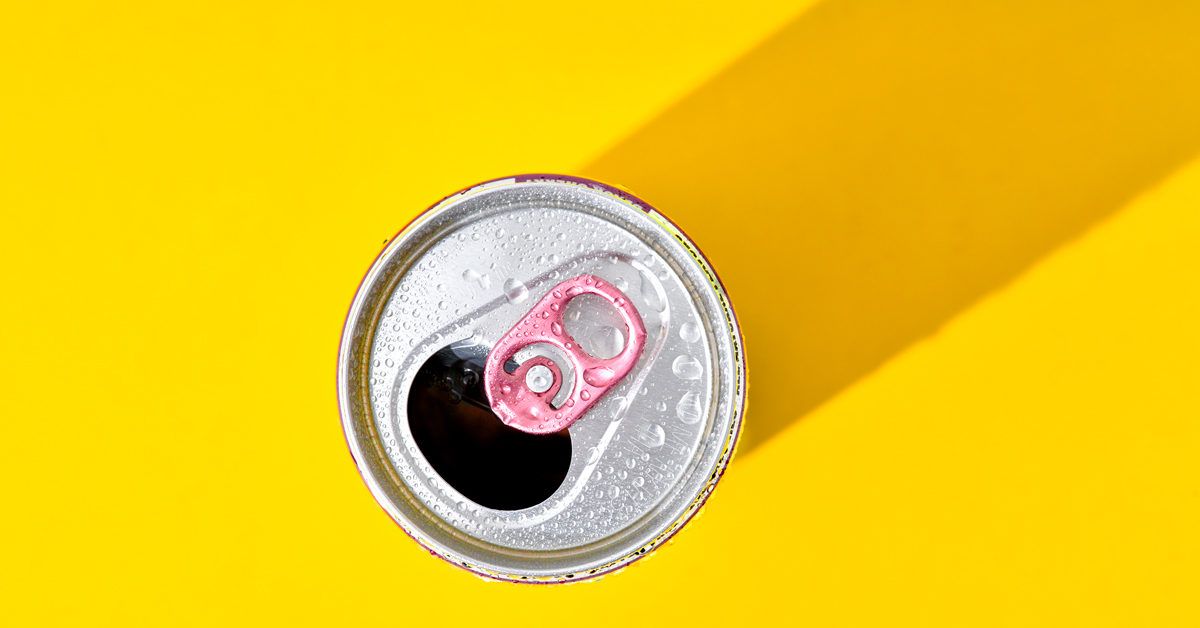
The light beer market, long a dominant force in the beverage industry, faces a complex future. While its popularity has been steadily declining in recent years, several factors suggest that light beer may still have a place in the evolving landscape of alcoholic beverages.
Emerging Trends in the Light Beer Market
The light beer market is experiencing a dynamic shift, driven by consumer preferences for more flavorful and diverse options. While traditional light lagers continue to dominate the market, emerging trends suggest a move towards lighter versions of craft beers and other styles.
This shift reflects a growing demand for beers that offer both low calories and interesting flavor profiles.
- Increased Demand for Flavored Light Beers:Consumers are seeking out light beers with unique flavors, such as citrus, fruit, or spices. This trend is evident in the growing popularity of light beers infused with natural flavors, catering to a wider range of taste preferences.
- Rise of Low-Carb Light Beers:As health consciousness increases, consumers are looking for light beer options with lower carbohydrate content. This has led to the development of light beers specifically designed to be low-carb, appealing to health-conscious individuals who enjoy beer but want to minimize their carbohydrate intake.
- Growing Popularity of Light Craft Beers:The craft beer revolution has extended to the light beer category, with breweries creating lighter versions of their popular craft beers. This trend offers consumers a unique combination of craft quality and low-calorie content, expanding the appeal of light beer to a more discerning audience.
Innovative Brewing Techniques for Light Beer
The future of light beer hinges on innovation, particularly in brewing techniques that can enhance its taste and appeal. Advancements in brewing technology are allowing brewers to create lighter beers with more complex flavors and a more satisfying mouthfeel.
- Improved Malt and Hop Selection:Brewers are experimenting with new malt and hop varieties specifically designed to enhance the flavor of light beers. These innovative ingredients allow for the creation of light beers with nuanced flavor profiles, challenging the traditional perception of light beer as bland.
- Advanced Fermentation Techniques:Brewers are employing advanced fermentation techniques, such as cold fermentation and extended aging, to enhance the flavor and complexity of light beers. These techniques allow for the development of more nuanced flavors and a smoother, more satisfying drinking experience.
- Novel Filtration Methods:Innovative filtration methods are being used to create light beers with a more balanced mouthfeel. These methods remove unwanted particles while preserving the delicate flavors, resulting in a light beer that is both refreshing and flavorful.
Sustainability of Light Beer
The long-term sustainability of light beer as a popular beverage choice depends on its ability to adapt to evolving consumer preferences and market trends. The success of light beer in the future will be determined by its ability to offer both low-calorie options and satisfying flavor profiles, catering to the diverse needs and desires of a changing consumer base.
- Meeting Health and Wellness Trends:Light beer’s ability to cater to health and wellness trends, such as low-calorie and low-carb options, will be crucial for its continued success.
- Appealing to a Diverse Consumer Base:Light beer must continue to appeal to a diverse consumer base, including younger generations who are increasingly seeking out craft beers and other unique beverage options.
- Embracing Innovation and Sustainability:Light beer brands must embrace innovation and sustainability, adopting new brewing techniques and eco-friendly practices to maintain their relevance and appeal to environmentally conscious consumers.
Ultimate Conclusion: Is Light Beer The Diet Soda Equivalent
So, is light beer the diet soda equivalent? The answer, like most things in life, is nuanced. While light beer may offer a lower-calorie option for those seeking moderation, it’s important to remember that taste and satisfaction are subjective. Ultimately, the choice comes down to individual preferences and priorities.
Whether you’re a devoted beer aficionado or simply looking for a lighter option, understanding the intricacies of light beer can help you make informed choices about your beverage consumption.




